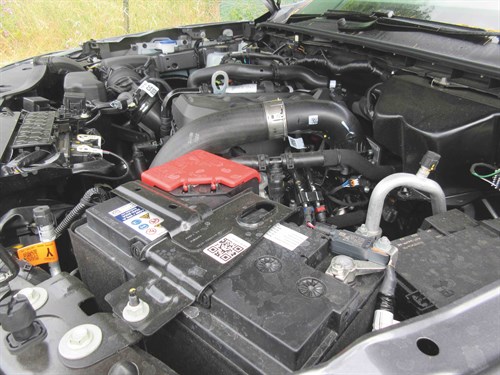- Further 4.25t electric van rule changes under consideration
- Arval research uncovers van fleet optimism
- Pre-orders open for new Nissan Interstar
- More than half of UK van drivers now believe EVs more cost effective than ICE, VW finds
- Public EV charging costs preventing adoption for some fleets, AFP says
- Ford Ranger Tremor review
- Inseego awarded Crown Commercial Service framework status
- ADVERTISEMENT FEATURE: Electrify and optimise: Digital solutions at the forefront of decarbonisation
- Fleets being pushed to take electric vans due to ZEV mandate, AFP reports
- Buying a used... Citroen Relay (2019)
The What Van? Road Test: Volkswagen Amarok (2023)
Date: Monday, October 2, 2023

Powertrain
Equipped with common rail direct fuel injection and variable turbocharger geometry, the Amarok’s BiTurbo in-line four-cylinder diesel delivers its maximum power at 3,750rpm. Top torque of 500Nm bites across a 1,750rpm-to-2,000rpm plateau.
AdBlue is required to keep the Amarok compliant with the Euro 6 exhaust emission rules. The filler point for the 19.3-litre AdBlue reservoir is next to the diesel filler point under a flap on the offside of the vehicle.
Driving
While our Amarok would never be able to surge away from rest at quite the pace of its V6 stablemate, with 200hp-plus on tap it is certainly no slouch, delivering strong acceleration and relaxed cruising. Much of that is due to the quality and competence of the gearbox, which delivers an exceptionally-smooth change as it slides from one set of cogs to the next.
The truck handles well too, swinging with ease through one rural bend after another thanks in part to its new electromechanical power steering, but in-cab noise levels are a tad too high and its unladen ride is uneven to the point of being downright lumpy. The rear suspension features leaf springs while the front employs MacPherson-type struts, and the whole system may require a rethink.
The Amarok comes with a drive mode control system.
While eco mode was tempting from the fuel economy viewpoint, we stuck with normal that we felt delivered the best overall performance. Other modes assist driving in muddy, sandy or slippery conditions, or if you are towing a trailer.
Press the ‘M’ button on the side of the gearshift and you can go up and down the gears manually using the plus and minus buttons. One suspects that most drivers will only choose the manual option if they venture off-road; and if they do so, they will discover that four-wheel-drive is easy to engage.
All you need to do is twist a knob between the seats and select it with either a high (4H) or a low (4L) set of gears. You need the latter if you are about to engage in some serious mud-plugging.
The 4A setting that is also available confused us somewhat. What it does, however, is give you extra traction on ordinary roads if they happen to be hazardous due to ice and snow; a useful facility.
Grab-handles on the A and B pillars give the passengers sitting closest to them something to hang onto if the offroad going gets rough. They’re accompanied by grab-handles above all the door apertures.
With shorter overhangs than the old model, the Amarok’s performance off-road is commendable.
Wading depth has gone up by 300mm to 800mm, which gave us a bit more confidence when we crossed streams, although the warm, dry conditions we encountered when we drove the truck meant that they were running at a trickle rather than a torrent. Steep rutted farm tracks with the occasional boulder were tackled with ease, with little need to resort to 4H.
A week or two later and we would have been sloshing through thick mud and battered by heavy rain; but we’re confident Amarok would have coped.
View The WhatVan Digital Edition


